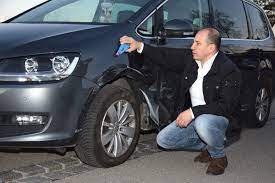Car damage assessment is a crucial process for every vehicle kfz gutachter kaltenkirchen owner, whether it’s due to an accident, natural disaster, or regular wear and tear. Understanding how to assess car damage accurately not only ensures your safety on the road but also helps you make informed decisions about repairs and insurance claims. In this comprehensive guide, we’ll delve into the essential steps and considerations for evaluating car damage effectively.
Step 1: Safety First
Before assessing car damage, prioritize safety. If the damage occurred due to an accident, ensure that everyone involved is safe and out of harm’s way. If the vehicle is in a hazardous location, move it to a safe spot if possible. Turn on hazard lights to alert other drivers, and if necessary, contact emergency services for assistance.
Step 2: Visual Inspection
Begin by conducting a visual inspection of the vehicle. Walk around the car and carefully examine the exterior for any visible signs of damage. Look for dents, scratches, cracks, or any other irregularities in the body panels, bumpers, lights, and windows. Take note of the extent and location of the damage.
Step 3: Assess Structural Integrity
Next, assess the structural integrity of the vehicle. Check for any signs of misalignment or deformation in the frame or chassis. Look underneath the car for any visible damage to the suspension, exhaust system, or other critical components. Structural damage can significantly affect the safety and performance of the vehicle and may require professional inspection and repair.
Step 4: Mechanical Inspection
After assessing the exterior and structural integrity, it’s essential to inspect the mechanical components of the vehicle. Open the hood and check the engine bay for any signs of damage or leaks. Inspect the radiator, hoses, belts, and fluid reservoirs for any abnormalities. Test the functionality of essential systems such as brakes, steering, and lights to ensure they are working correctly.
Step 5: Document the Damage
Documenting the damage is crucial for insurance claims and repair estimates. Take detailed photographs of the car from multiple angles, focusing on the areas of damage. Note the date, time, and location of the incident, as well as any relevant circumstances or factors that may have contributed to the damage. Keep all documentation and records organized for future reference.
Step 6: Seek Professional Evaluation
While you can conduct a preliminary assessment of car damage on your own, it’s advisable to seek a professional evaluation from a qualified mechanic or auto body shop. They have the expertise and equipment to identify hidden damage and provide accurate repair estimates. Consult with multiple experts if necessary to compare assessments and make informed decisions.
Conclusion:
Mastering car damage assessment is essential for every vehicle owner to ensure safety, make informed decisions, and navigate the repair process effectively. By following the steps outlined in this guide and seeking professional evaluation when needed, you can confidently assess car damage and take the necessary steps to restore your vehicle to its optimal condition. Remember, safety always comes first, so prioritize your well-being and that of others on the road.

